Eastern Tarsiers
- March 25, 2024
- 0 comment
Eastern Tarsiers, small primates native to various parts of Southeast Asia, captivate with their distinctive features and elusive nature. These nocturnal creatures, belonging to the Tarsiidae family, are characterized by their oversized eyes, which aid in hunting prey and navigating through dimly lit forest environments. Sporting fur ranging from grayish-brown to reddish-brown, they blend seamlessly into their lush forest habitats. Despite their diminutive size, Eastern Tarsiers possess remarkable agility and leaping abilities, allowing them to traverse the dense foliage with ease.
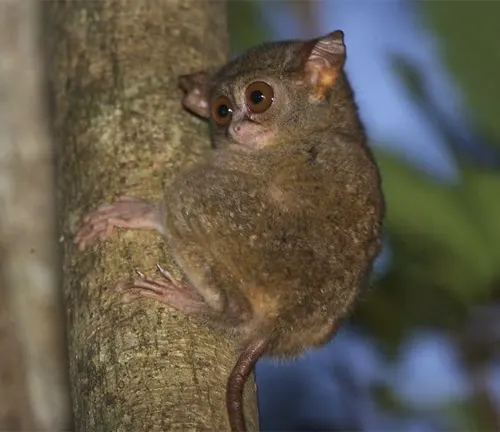
Their diet primarily consists of insects, which they capture using their nimble fingers and acute hearing. Eastern Tarsiers communicate through a combination of vocalizations, including ultrasonic calls beyond the range of human hearing, and scent marking to establish territories. Their reproductive cycle is marked by intricate courtship displays and the birth of precocial offspring. However, these fascinating creatures face numerous threats, including habitat loss due to deforestation and illegal capture for the pet trade. Conservation efforts are underway to safeguard their habitats and raise awareness about their importance in maintaining ecological balance in their native ecosystems.
Eastern Tarsiers Characteristics
| Characteristic | Description |
|---|---|
| Scientific Name | Tarsius bancanus |
| Family | Tarsiidae |
| Geographic Range | Southeast Asia, including parts of Indonesia, Malaysia, and the Philippines |
| Size | 80 to 160 grams |
| Appearance | Small primate with large eyes; fur varies from grayish-brown to reddish-brown |
| Diet | Insectivorous, feeding mainly on insects such as crickets, beetles, and moths |
| Activity Pattern | Nocturnal |
| Communication | Vocalizations (including ultrasonic calls) and scent marking |
| Reproduction | Gestation period around six months; typically give birth to single offspring |
| Conservation Status | Vulnerable due to habitat loss and illegal pet trade |
| Conservation Efforts | Habitat protection, awareness campaigns, and community engagement initiatives |
Discovering the Enigmatic Primates of the East
Eastern Tarsiers, scientifically known as Tarsius bancanus, are enigmatic primates found across various regions of Southeast Asia. These small, nocturnal creatures belong to the Tarsiidae family and are known for their distinctive large eyes, elongated fingers, and remarkable leaping abilities.
Physical Characteristics
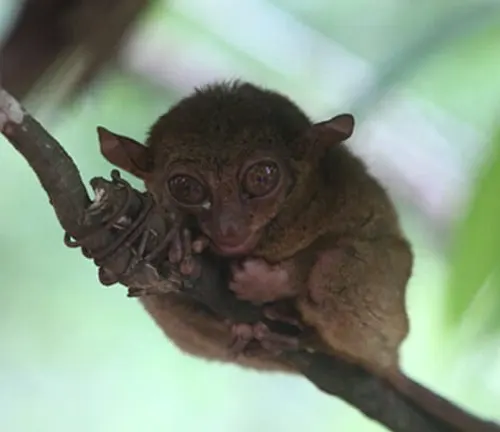
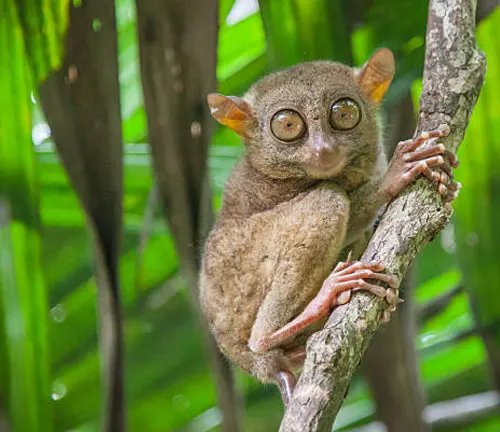
Eastern Tarsiers possess a distinctive set of physical characteristics that distinguish them within the primate world. Primarily small in stature, they typically weigh between 80 to 160 grams, making them among the smallest primates. Their body length ranges from 10 to 15 centimeters, with a tail length approximately equal to or slightly longer than their body. One of the most notable features of Eastern Tarsiers is their disproportionately large eyes, which are adapted for nocturnal vision. These large, forward-facing eyes enable them to effectively hunt for prey and navigate through the dimly lit environments of their forest habitats.
Their fur varies in color, ranging from grayish-brown to reddish-brown, providing camouflage amidst the foliage. Eastern Tarsiers have elongated fingers with claw-like nails, which they use to grasp onto branches and capture insects with precision. Their hind limbs are elongated, aiding in their leaping abilities as they navigate through the dense vegetation. Overall, these physical adaptations make Eastern Tarsiers well-suited for their arboreal lifestyle in the forests of Southeast Asia.
Habitat and Ecology


Eastern Tarsiers are primarily found in dense forest habitats across various regions of Southeast Asia, including parts of Indonesia, Malaysia, and the Philippines. They inhabit a range of forest types, from lowland rainforests to montane forests, preferring areas with dense vegetation and ample coverage. Within these habitats, Eastern Tarsiers are most commonly found in the understory and middle canopy layers, where they can move agilely among branches and foliage.
In terms of ecology, Eastern Tarsiers are predominantly insectivorous, with insects making up the majority of their diet. They feed on a variety of small invertebrates such as crickets, beetles, moths, and other arthropods that they capture using their nimble fingers and acute hearing. Their large eyes, adapted for nocturnal vision, allow them to hunt effectively in low light conditions, giving them an advantage over their insect prey.
Eastern Tarsiers are primarily solitary animals, with individuals typically occupying and defending territories within their home range. They communicate through a combination of vocalizations, including high-pitched calls and ultrasonic frequencies, as well as scent marking to demarcate their territory and communicate with conspecifics.
Reproduction in Eastern Tarsiers is characterized by monogamous mating pairs, with males engaging in courtship displays to attract females. After a gestation period of approximately six months, females give birth to single offspring. The young tarsiers are precocial, meaning they are relatively well-developed at birth and can move independently shortly after.
Behavioral TraitsBehavioral Traits
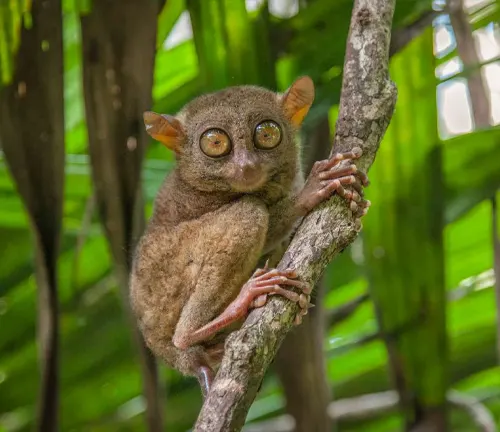
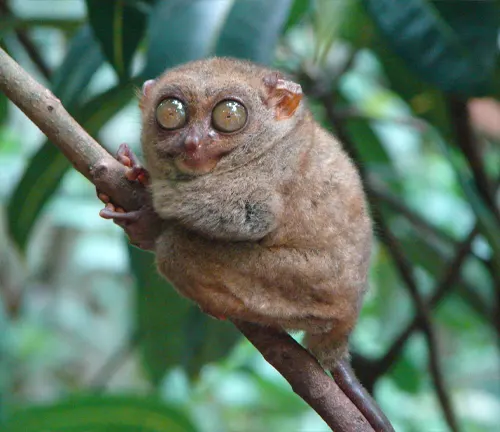
Eastern Tarsiers exhibit a range of intriguing behavioral traits that are adapted to their nocturnal lifestyle and arboreal habitat. As primarily solitary creatures, they spend their days resting in concealed locations within the forest canopy, venturing out at night to forage for food. This nocturnal behavior helps them avoid predators and maximize their chances of capturing prey in the darkness.
Communication among Eastern Tarsiers is primarily through vocalizations and scent marking. They emit high-pitched calls and ultrasonic frequencies, which are beyond the range of human hearing, to communicate with conspecifics and establish territories. Scent marking, often through urine and gland secretions, is another important method of communication used to demarcate territory boundaries and convey social status.
Eastern Tarsiers are highly agile and adept at moving through their arboreal habitats. Their elongated fingers and strong hind limbs allow them to leap from branch to branch with remarkable precision and speed. This locomotion is essential for navigating the complex canopy structure of the forest and accessing their insect prey.
Despite their solitary nature, Eastern Tarsiers may exhibit some degree of social behavior, particularly during the mating season. Males engage in courtship displays to attract females, using vocalizations and scent marking to signal their reproductive readiness. Once a mating pair is formed, they may engage in mutual grooming and other affiliative behaviors.
Another fascinating aspect of Eastern Tarsier behavior is their ability to communicate through ultrasonic frequencies. These high-pitched calls, which are beyond the range of human hearing, serve various functions including mate attraction, territory defense, and coordination during foraging activities.
Reproduction and Life Cycle
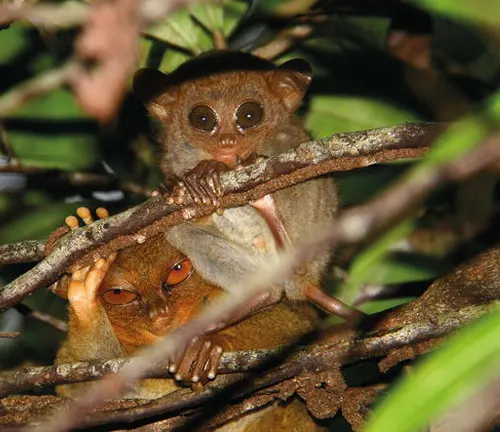
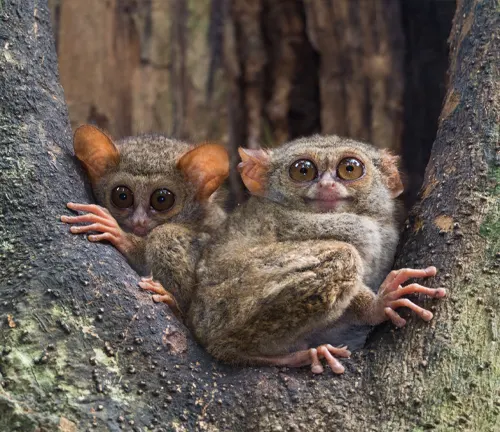
Reproduction and the life cycle of Eastern Tarsiers are intriguing aspects of their biology, characterized by unique behaviors and adaptations to their forest habitat. Eastern Tarsiers typically exhibit monogamous mating behavior, with individuals forming long-term pair bonds for breeding purposes.
Mating rituals often involve elaborate courtship displays, where males showcase their fitness and dominance through vocalizations and scent marking. Once a mating pair is formed, the female undergoes a gestation period of approximately six months before giving birth to a single offspring.
The newborn tarsier, known as an infant, is precocial, meaning it is relatively well-developed at birth. Despite their early maturity, infant tarsiers are dependent on their mother for nourishment and protection. The mother provides care and protection for her offspring, nursing them and keeping them safe within the nest site.
As the infant tarsier grows, it gradually becomes more independent and begins to explore its surroundings under the watchful eye of its mother. During this period, the mother continues to provide guidance and protection, teaching the young tarsier essential survival skills such as foraging and avoiding predators.
As the tarsier matures, it reaches sexual maturity at around one to two years of age, depending on the species. At this point, it becomes capable of reproducing and contributing to the next generation of tarsiers.
The life span of Eastern Tarsiers in the wild can vary but is estimated to be around 12 to 20 years, although this can be influenced by factors such as predation, disease, and habitat quality.
Conservation Status
The conservation status of Eastern Tarsiers is a matter of concern due to various threats to their populations and habitats. While specific data on population sizes are often limited, Eastern Tarsiers are generally considered to be vulnerable or near-threatened across their range.
One of the primary threats to Eastern Tarsiers is habitat loss and degradation due to deforestation and land conversion for agricultural purposes. As forests are cleared for logging, agriculture, and human settlement, tarsier habitats are fragmented and diminished, reducing the availability of suitable habitat for these primates.
Additionally, Eastern Tarsiers are subject to hunting and capture for the illegal pet trade. Despite legal protections in some regions, enforcement of regulations can be challenging, leading to continued exploitation of tarsier populations for the exotic pet market.
Other threats to Eastern Tarsiers include infrastructure development, such as roads and mining operations, which further fragment and degrade their habitats. Climate change also poses risks, potentially altering the distribution of suitable habitat and impacting prey availability.
Conservation efforts aimed at protecting Eastern Tarsiers focus on habitat preservation, law enforcement to combat illegal hunting and trade, and community-based initiatives to raise awareness and promote sustainable practices. Protected areas and reserves are established to safeguard critical tarsier habitats, while research and monitoring programs provide essential data for conservation planning.
Cultural Significance
Eastern Tarsiers hold significant cultural importance in the regions where they are found, often featuring prominently in local folklore, mythology, and traditional beliefs. These enigmatic primates are woven into the cultural fabric of communities across Southeast Asia, where they are revered and sometimes feared as mystical creatures with supernatural powers.
In many indigenous cultures, tarsiers are associated with stories and legends that depict them as guardians of the forest or spirits of the night. Some cultures believe that encountering a tarsier is a sign of good fortune or protection from harm, while others may view them as omens or portents of impending events.
Tarsiers are also depicted in various forms of traditional art, including paintings, sculptures, and textiles, where they symbolize themes of wisdom, mystery, and connection to the natural world. In some regions, tarsiers are revered as symbols of fertility and prosperity, with rituals and ceremonies dedicated to honoring these creatures and ensuring their continued presence in the landscape.
Despite their cultural significance, Eastern Tarsiers face threats from habitat loss, hunting, and the illegal pet trade. Conservation efforts aimed at protecting tarsiers often include initiatives to raise awareness about their cultural importance and promote coexistence between humans and wildlife.
Different Species
Philippine Tarsier
(Tarsius syrichta)
Found in the Philippines, particularly in the islands of Bohol, Leyte, Samar, and Mindanao. Known for its large eyes and long tail relative to body size.

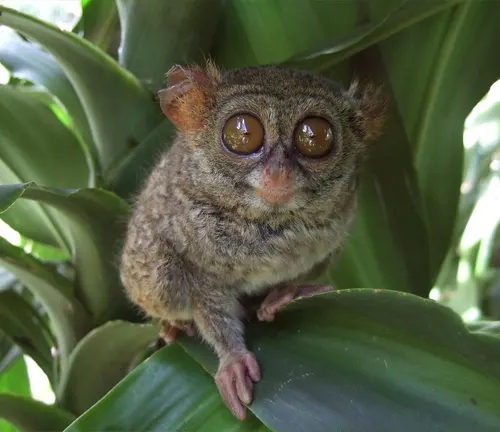
Spectral Tarsier
(Tarsius spectrum)
Found in Indonesia, particularly in Sulawesi, Selayar, and Buton islands. Named for its varied coloration, ranging from grayish-brown to reddish-brown.
Horsfield’s Tarsier
(Tarsius bancanus horsfieldi)
Subspecies of Tarsius bancanus found in Borneo, characterized by its smaller size compared to other subspecies.
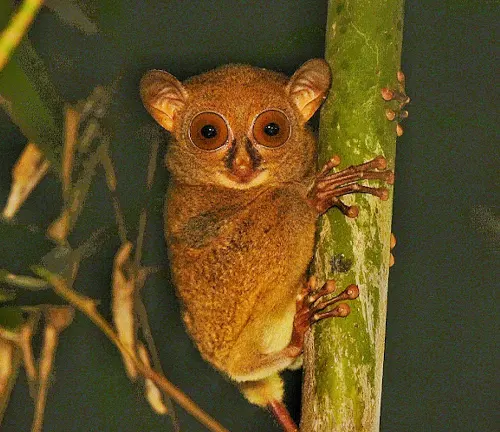

Dian’s Tarsier
(Tarsius dentatus)
Found in central Sulawesi, Indonesia, distinguished by its more robust build and longer tail.
Pygmy Tarsier
(Tarsius pumilus)
Discovered in the highlands of Sulawesi, Indonesia, this species was thought to be extinct until its rediscovery in 2008. It is the smallest known tarsier species.
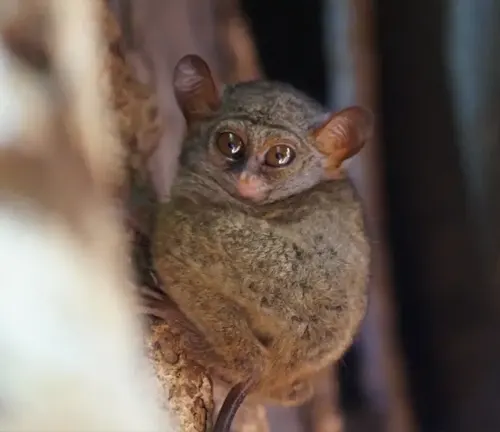
Frequently Asked Questions (FAQs)
- What is the geographic range of Eastern Tarsiers?
Eastern Tarsiers are found in various parts of Southeast Asia, including Indonesia, Malaysia, and the Philippines. - How big are Eastern Tarsiers?
Eastern Tarsiers typically weigh between 80 to 160 grams and have a body length ranging from 10 to 15 centimeters. - What do Eastern Tarsiers eat?
Eastern Tarsiers are insectivorous, feeding primarily on insects such as crickets, beetles, moths, and other small invertebrates. - Are Eastern Tarsiers endangered in the wild?
While Eastern Tarsiers are not currently classified as endangered, they face threats such as habitat loss and fragmentation, making their long-term survival uncertain. - How do Eastern Tarsiers hunt for food?
Eastern Tarsiers use their acute hearing and large eyes to locate prey in the dark, dense forest environments where they dwell. They then use their agile fingers to capture insects with precision. - What is the reproductive behavior of Eastern Tarsiers?
Eastern Tarsiers typically mate monogamously, with males engaging in courtship displays to attract females. Females give birth to single offspring after a gestation period of around six months. - Do Eastern Tarsiers live in social groups?
Eastern Tarsiers are largely solitary animals, although they may form small family groups consisting of a mated pair and their offspring. - How long do Eastern Tarsiers live in the wild?
The lifespan of Eastern Tarsiers in the wild is estimated to be around 12 to 20 years, although this can vary depending on factors such as predation and habitat quality. - What adaptations do Eastern Tarsiers have for their nocturnal lifestyle?
Eastern Tarsiers have large, forward-facing eyes adapted for low-light vision, as well as highly sensitive ears that aid in detecting prey and predators in the dark. - Are Eastern Tarsiers vocal animals?
Yes, Eastern Tarsiers use a variety of vocalizations, including high-pitched calls and ultrasonic frequencies, for communication and territorial defense. - Do Eastern Tarsiers migrate or have seasonal movements?
Eastern Tarsiers are generally sedentary animals, with limited movements within their home ranges. They do not undergo long-distance migrations or seasonal movements.


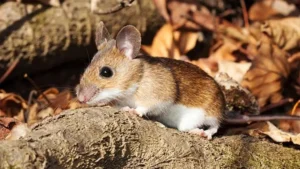


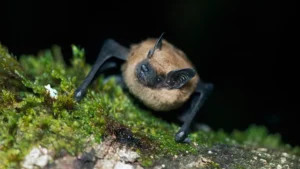





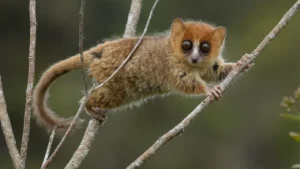


Leave your comment